|
Somerset
by Martin Ellacott ellacott@mnsi.net
Somerset represents the latest endeavor
in a series of small boats that I have built, and was designed by Sam Devlin of Washington
State. The hull is built of 1/2"; exterior grade plywood, good two sides. All
the exterior wood is Brazilian mahogany. The decks are strip plank mahogany and West
System epoxy. As a matter of fact, West epoxy was used exclusively for all coating,
gluing, and glassing operations. The bottom of the 1/2" hull has a 1/4" layer of
plywood cold-moulded to it and is covered with 2 layers of 6oz. fiberglass. The sides of
the hull and the cabin roof have a single layer of 6oz. glass. The 3/4" decks
are a lamination of 3 layers of 1/4" plywood formed over the bulkheads. |
The transom, cabin roof and the top of
the motorwell cover, were made the same way except that separate forms had to be built
first. From all appearances, the boat looks as if it has an inboard motor, when in
actuality a 60HP outboard motor is bolted to an interior transom, hidden under the motor
cover. All bulkheads and floors are 3/4", exterior grade plywood, with the
interior of the hull given several coats of epoxy. |
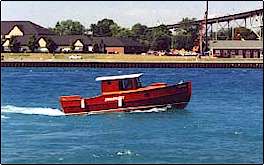 |
The interior joints and bulkheads are
filleted using a combination of screened mahogany sawdust and epoxy, and then triple
glassed. The exterior seams and joints are all double glassed. When the hull was
returned to the shop after being turned over, the deckhouse was totally pre-fabbed,
waiting for warmer weather so it could be finished outside. When finished, Somerset
will have all the necessary equipment for this small coastal cruiser to spend extended
periods of time away from her home port in Sarnia, Ontario. |
#1.....After 14 months, Somerset
finally emerges from the shop. At this point, the hull is completely finished and the
interior structures have been roughed in.
|
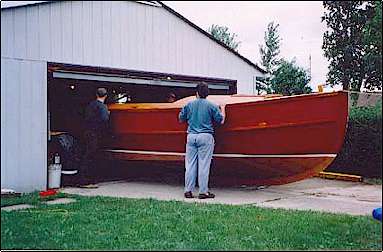 |
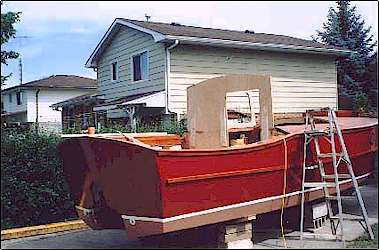 |
#2..The main bulkhead has been
reattached. It had to be cut in two to accommodate turning the hull over, and later,
moving it out of the shop. It has also been splined to maintain its integrity.
|
#3...After end of the boat, showing the
3/4" laminated transom and cockpit drains.
|
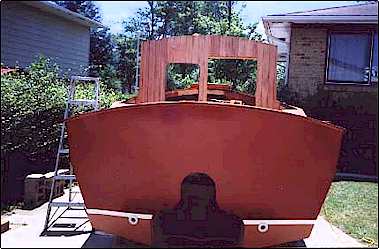
|
 |
#4.....Attachment of the pre-fabbed
cabin side. Also shows some of the detail of the motor cover.
|
#5.....Cabin sides permanently glued
and screwed in place. The window shows the epoxied insert that has been routed out to
accommodate the 3/16", tempered glass which is flush fitting.
|
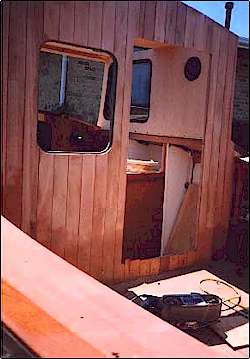 |
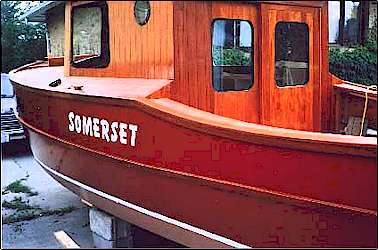 |
#6....Exterior of the deckhouse is
completely finished. The companion-way door slides horizontally for access to the cabin.
|
#7......Finished exterior, showing the
mooring bit and the scupper for the footwell located at the bow.
|
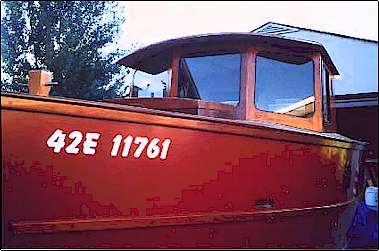 |
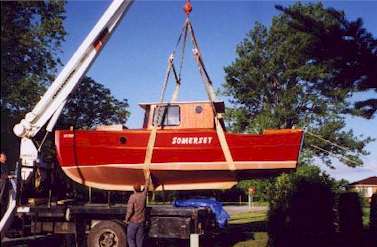 |
#8.......Pitman crane and lifting
harness. In this position, it can be seen that about 14" of the after end of the keel
have been removed to facilitate sharper turns in confined areas.
|
#9.....In the water at
last,approximately 2 years from the start of the project. The bridge in the background
joins Sarnia, Ontario and Port Huron, Michigan. This area is one of the busiest waterways
in Canada.
|
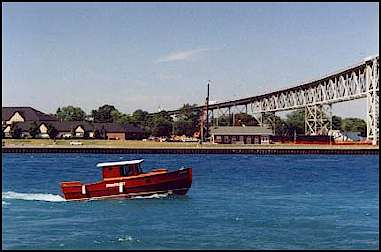 |
 |
#10.....Boat and builder in the Sarnia
Yacht Club at the end of the sailing season.
|

|